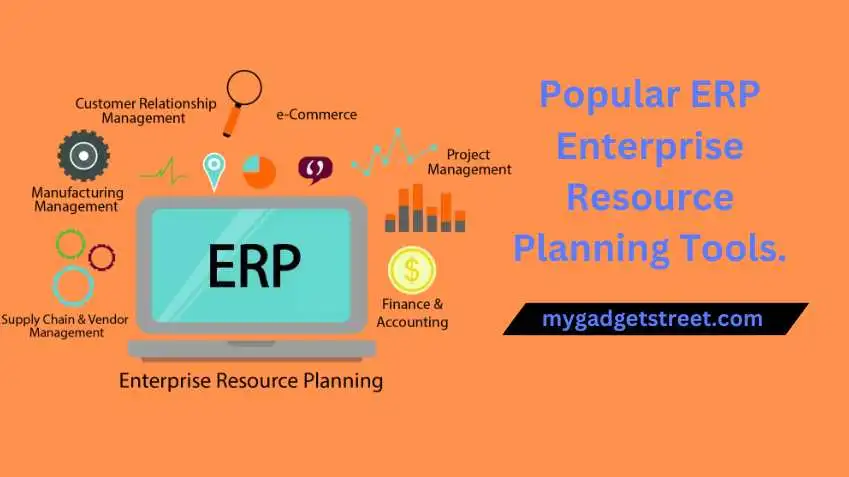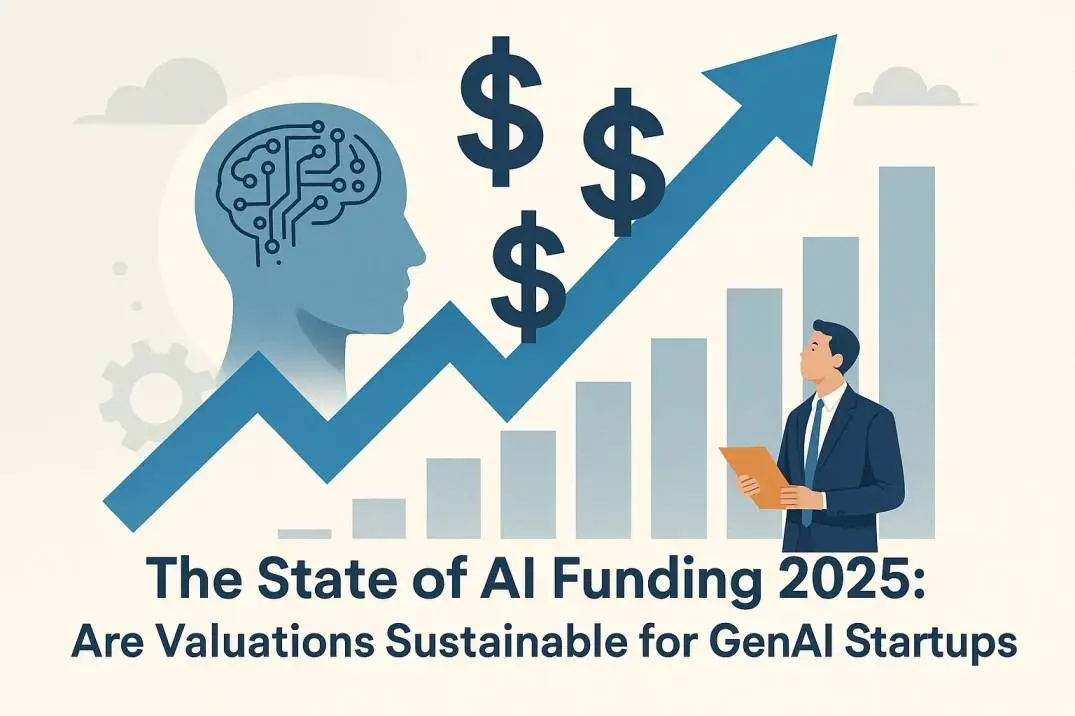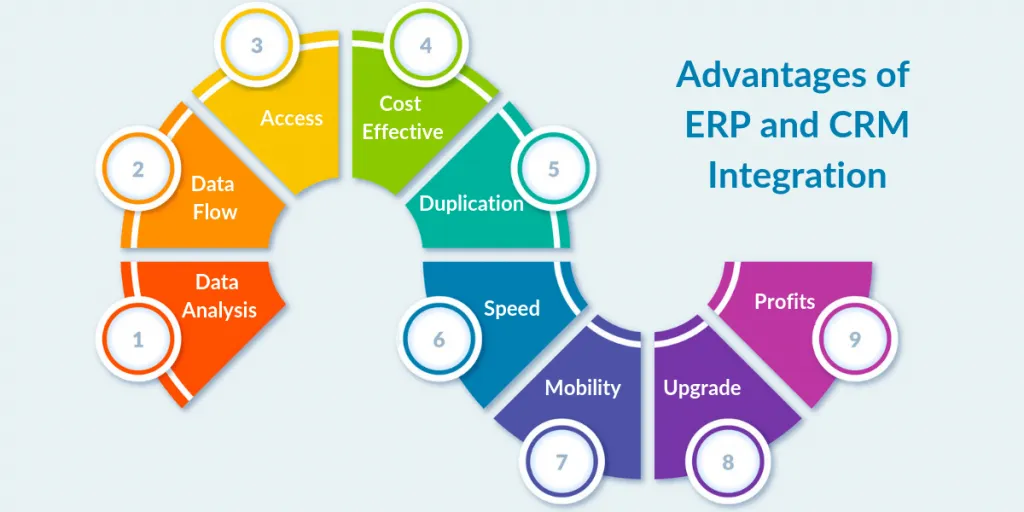Supported by the use of software applications and stated best practices, Enterprise Resource Planning (ERP) is a process-oriented technique that connects technologies utilized across many divisions of a firm, therefore enabling the simple and consistent flow of information under set controls.
The ERP tools applied and their features for the several purposes they assist are discussed in this paper. Starting with the functional needs will help us to better grasp the tools.
What is required of an ERP system
Any ERP system fundamentally has to satisfy the following functional demands.
- It has to be a cohesive system with simple interfaces and apps that runs well across several departments using the required regulated access.
- Common databases (or several but shared databases) available via several apps.
- Search and reporting tools allow one to create reports depending on different criteria (such as "all unshipped orders as of yesterday in the 'toys' category".
- As needed, scalability, customizing, and simple integration of ad hoc components.
The ERP system is mandatorially integrated with the following tools and applications to satisfy the above described functional demands.
Read also: 5 Typical Trading Multiples for Gas and Oil Valuation
Instruments of Information Management?
Any Enterprise Resource Planning system is built on data storage and information management with a clear workflow spanning several departments and activities. Relational databases from enterprises like Oracle, Sybase, DB2, and open-source free products like Microsoft MySQL, Postgresional, Apache Derby, etc. abound for data storage among several solutions and tools.Content Management Systems (CMS) and repository apps are two more information management solutions.
Depending on the sector and needed purposes, one should choose the relevant one. As transaction-based data flows across several statuses—from production to inventory to order capture to sale to supply status—a manufacturer may find a transactional database such as Oracle or MySQL to be more relevant. Conversely, an online content writing organization could discover that their requirements are better suited for a CMS repository system with version control.
The database or repository might be single centralized or many with automated data flow from one database to the other. The stated process guarantees flawless data flow. One can host a database either locally or remotely, or even on the cloud.
Uses and Interfaces Appropriate for Suitable Permission Control
To handle data, data storage and management call either read-only or editing access. Items have to be designated as ready inventory after they are produced. Then the department of stock management changes it to be ready for sale. The item should be changed to sold status and so on after a purchase.
Easy-to-use apps and interfaces thus become essential components of any ERP system with established restrictions and permissions. Once an item is designated as sold, for instance, only logistic department operators should be allowed to alter it further; the ones from the manufacturing or inventory department should have view-only access.
To prevent any duplication and content disputes, similarly for a content writing ERP tool, once a writer turns in the material to the editor for approval, only the editor should be allowed to change it.
Any ERP system, desktop installs, tablet or mobile apps, may enable such permission-based controls, apps, and interfaces to be incorporated in, regardless of browser based capability. While a sales team always on the go will gain from a browser-based interface or mobile app, a manufacturing team in a permanent site will favor a desktop-based interface.
Read also: Successful Enterprise Resource Planning Case Studies
Tool for flow management in work
An ERP system consists of several modules and data repositories where activities follow a logically defined order depending on the corporate demands. This represents the flow of labor. Workflow is like the mind-controlling the several bodily activities (blood flow, air, food and other supplies, body parts movement, etc.). Any ERP system needs a well defined process with suitable access at several levels.
Agiloft Workflow, WorkflowGen, Inceptico DMS, Intelex Business Management, SimpleECM, etc. are among often used technologies applied inside the ERP system.
Dashboard for Reporting Calls
Additional critical needs for an ERP system include management level, department level, team level, or individual level report generating. Usually provided in either a dashboard version (with a real-time data view displaying such information as orders received but not yet sent, unsuccessful payments of the last week, etc.), it created in conventional word- or data-editing programs such as spreadsheets, either customisable reports.
Most dashboards and reporting systems run in real-time, or with a very little time lag. These reporting tools/dashboards are accessible as browser-based or desktop installs, much like the programs departments utilize for data updates. They also have end-of-day reporting tools that, as Microsoft Excel or Word files, allow email reports with charts, graphs, or tables.
Read also: Volatility Weighs on Hewlett Packard Enterprise and Others
Instruments of Communication:
Any system running across several departments must be communicated upon. ERP systems help with this by providing instant messaging, chat, general broadcast capabilities at both individual and group levels, and tools for action-based automatic mail creation.
Say once an order is tagged as "Ready to Ship," an automated mailer should be triggered to the logistics department to start the dispersion process (or if a pizza shop kitchen has created a problem); a general broadcast message should be issued to all other departments to cease accepting more orders.
To provide quick and simple communication, further instant messaging features—like those of Lync, Chatter, or Yammer—are included.
Apart from the aforementioned instruments that are a necessary component of every ERP system, there are other ones that may be included as needed.
Analytical instruments
ERP systems allow many analytical tools—for business intelligence, predictive analysis, data mining, and related analysis—to be combined. Like analyzing customer behavior during holiday shopping, comparing findings for items in red colored shelf having greater sales than those in blue colored shelf, etc., these analytical tools help to provide useful insights for developing strategic business decisions based on accessible data.
Tool for Task Scheduling and Resource Allocation
For labor-intensive sectors especially, ERP systems can also have tools for distributing resources across departments and tasks. These instruments operate on the straightforward idea of defined time consumed by a job or project versus the schedule of resource availability. When a job is completed, the resource is either placed in a pool for the next one or automatically allocated a new work matching his qualifications.
In case a task is delayed, tools offer use for hand involvement at the supervisor level. Among the advantages are clear awareness of present and future workload, best use of resources, investigating automated alternatives, etc.
Read also: How to Compare Companies Using Enterprise Value
Other Add-On Characteristics
ERP systems can combine, depending on the needs of the company, modules for human resource management, project management, time tracking systems, and document management. ERP providers help interested customers choose the best match as there are many solutions available particular to every business and function type. Internet is constantly accessible for self-help in obtaining necessary information.
The bottom line
ERP is a difficult framework to use generally requiring a specific provider for deployment. Two major ERP installation barriers found are excessive prices and non-best practice adherence failing. Although thorough evaluation of several suppliers and examination of free open-source technologies can help to somewhat offset cost, the other issue of failures resulting from lack of adherence to best practices can be reduced by concentrated training to staff. An effective and successful use of ERP technologies depends on proper evaluation at first stages, cooperation with providers with appropriate skills, and clear expectations from the beginning. (For associated reading, see "Case Studies of Successful Enterprise Resource Planning").










